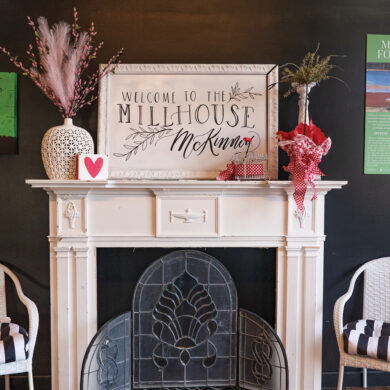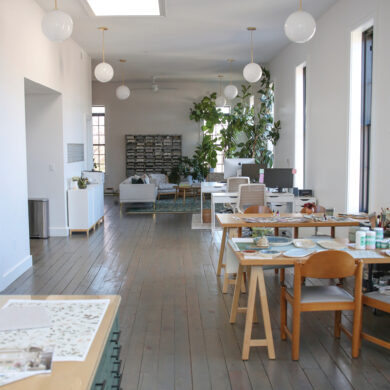
About Cost Plus/World Market
In the late 1950s, a San Francisco businessman turned traveler and importer began selling shiploads of hand-woven wicker from one of the city’s piers. As crates were unloaded, locals lined up and loaded up. Even curious tourists were drawn to the unique and unusual.
With such a receptive audience eagerly awaiting his return, it only made sense to open a store. And in 1958, he opened the first store in San Francisco’s famed Fisherman’s Wharf and called it Cost Plus World Market. The store quickly became a destination for those who craved original and handmade items from around the world. Items were sold at cost, plus ten percent—hence the name Cost Plus World Market!
More than fifty years later it’s still our passion to discover extraordinary finds from all over the world and make them accessible to all.
We bring the beauty and excitement of global bazaars to you. Our selection is always changing, and, like favorite mementos from your life, each item has a story worth sharing. From Balinese baskets, pottery from Portugal and collectibles from Africa to scrolled artwork inspired by Spanish artifacts—each store is a treasure trove.
There are over 259 Cost Plus World Market stores nationwide—and we’re always open online at
WorldMarket.com. So adventure in to see us today!

Relatively early in my career, as many young professionals do, I found myself at a crossroads. Feeling I’d outgrown my current role, I sought out new opportunities and had landed not one, but two great job offers. Being an analyst by nature and training, I set out to analyze which role was a better fit…in excruciating detail. I looked at every possible angle, beyond compensation, to position and manager, to commute, all the way to the implications for my social life and running habit.
The paths were different, yes. But, neither was obviously better or worse than the other, and that was the problem. One job was in Portland—where I’d been living and working for a year—taking on a bigger role at a brand I was passionate about, working on one of the most important international sport moments. The other was back in the Bay Area, where I’d made my home as a young adult. It offered the opportunity to develop my creative brain while working at one of the most impressive tech companies in Silicon Valley.

I agonized for weeks. I created spreadsheets. I scored and re-scored the opportunities. I sought council from friends. But finally, I called my mentor—a no-nonsense boss who supported my talent early—and she said, “They both sound incredible. What’s the worst that could happen? Just take a leap.” So I did. And, I have to tell you, it was so scary. I didn’t feel at all prepared for the role I was taking on. But, the best opportunities are the ones that scare you a little bit, and that was the last time I agonized over a decision without a clear answer. That experience taught me the skill that has been invaluable professionally: recognize the moment to leap.
The reality is that in both work and life, we’re faced with countless decisions every day. We have more options than ever before, and while many answers are clear, we often just don’t have all the information we need. In those moments the comfort of certainty is elusive, analysis paralysis is a real thing, and it’s easy to spend precious hours researching different alternatives. But, I’ve decided that if there’s not a clear winner, there’s likely not a clear loser, either.

This perspective may seem strange coming from an analytics leader, but it’s actually critical to the role. It’s important to be thorough when evaluating different options (in my world, marketing channels and programs). Gather all the data you can. Organize it clearly. Analyze it. But, if you’ve done all those things well, and there’s still no ‘right’ answer, you’ve found the moment to leap. It will require bravery, but make the best decision you can and move on. Don’t give it another thought, and certainly don’t bother with regret.
This philosophy has made me more efficient and effective. I’ve carried it beyond my professional life and into the personal; I don’t devote any more mental energy to a decision than is appropriate. Some decisions—such as what to have for dinner—are low-stakes. Others—such as whether to have a child while climbing the professional ladder—are very high stakes. But, both of them have their respective ‘leap’ moment, and it’s important to be able to identify it (i.e. a Cuban bowl dinner, and yes to a child—baby Knox was born last August).
I ended up taking a job in product marketing at Google and moving back to the Bay Area. I was well positioned for the roles that followed, and ultimately landed at Cost Plus World Market, a job I truly love. I also met my now-husband in San Francisco, so things worked out nicely from a personal perspective, too. But, I have no doubt that if I’d stayed in Portland, I would have been just fine. My story would be different, but it would still be mine.

HOW TO ADD THE ART OF LEAPING TO THE SCIENCE OF DECISION-MAKING
1. Assess the importance of the decision. This step is critical to identifying the ‘leap’ moment. Will this have a major impact moving forward? What are the potential consequences of getting it wrong?
2. Gather data. List the pros and cons. What are the most likely outcomes in either scenario?
3. Analyze the data. Make sure you’re weighing the most important factors. In my case, because I was early in my career, I optimized for the role that best set me up for long-term career growth.
4. If there’s no clear answer, just leap. Based on the importance you determined in #1, this may be five minutes into a decision, or it could be a month into a decision. Making the leap at the right moment is the undervalued art in the science.







